Piazzale della Corporazioni
Province
Location
Location Description
Ostia Antica, the port-city of Rome, was situated at the mouth (ostium) of the Tiber, where it flowed into the Tyrrhenian sea. Rome was situated further upriver, several kilometres from the sea. By its maritime position, Ostia also protected the landing at the mouth of the river; it controlled the trade that ran along it, and also the production of salt in the nearby salt works. Ancient historians believed that the city had been founded in the 7th century by king Ancus Marcius; archaeological evidence shows that the first settlement was founded as a colonia maritima in the 4th century BCE. and that it was already acting as the harbour of Rome in the 3rd century BCE.
From the 2nd century BCE Ostia (and later Portus) was the main port for the landing of wheat and other foodstuffs destined for the markets of Rome. It was a lively and cosmopolitan port city, where the great cargo ships unloaded produce from all over the Mediterranean and beyond. At Ostia the freight was transferred to riverboats to be sent upriver to Rome. This thriving commercial activity was accompanied by demographic and economic growth and by the presence of people coming from all over the known world.
Ostia is especially well known in archaeological and historical studies for its building history. The earliest Ostian houses are only known from sporadic traces, beginning from the 2nd century BCE. They were domus of traditional type, both in the simplest version, of direct Italic derivation, with rooms arranged round the atrium, and in the more complex Roman-Hellenistic form, in which the peristyle with the garden was added (e.g. the House of the Bucrania). They were single-family houses, generally single storied, or with an upper story limited to the height of the atrium.
The transition to a different type of house was marked by the so-called peristyle house, such as the House on the Via del Tempio Rotondo, which dates to the Augustan period, the one found below the Schola of Trajan (built 20-40 CE) and the House of the Thunderbolt, datable to the Vespasianic period (69-79 CE). In this latter type of house the rooms are laid out around a small central colonnaded courtyard, sometimes provided with a garden, more often paved. The later examples of this type include the first phase of the House of Fortuna Annonaria, with its garden (140-190 CE).
Ostia was heavily reconstructed in the 2nd century CE, under the pressure of the growth in population due to the completion of its ports. The new city followed new canons of utilitarian, high-density building, based on the multi-storied insula, which aimed at the efficient use of the little space available. A room with windows on the façade became a kind of atrium-room. The plan became enriched with smaller rooms and internal staircases that ascended to the private apartments of the upper floor. Independent stairways entered from the street provided access to the apartments on the second and upper floors. The most accomplished examples of this type of building date to the Hadrianic period, for example in some insulae that compose the so-called Garden Houses. In another type of insula the main source of light is not the street, but an inner arcaded courtyard.
The internal space was not always delimited by a portico; the Insula of the Paintings, comprising the houses of Jove and Ganymede, of the Infant Bacchus and of the Paintings, arranged according to an L-shaped plan, had its façade facing onto two streets, forming a corner, while its inner sides faced onto a fairly extensive garden, without porticoes.
In the 3rd and 4th centuries, the tenement houses of the less well-to-do fell into ruin or were patched up. Private building seemed limited to the erection of new patrician domus (e.g. the House of Amor and Psyche), built on the ground floor of already existing buildings and richly decorated with costly marbles. In these houses the gardens were chiefly an ornamental backdrop.
The internal garden of the house at Ostia described by St. Augustine (Confessions 9.10.23), which forms the setting for the conversation with his mother St. Monica in CE 388, is precisely of this type: a decorative backdrop that enhanced the peace and quiet of the interior of the house, an antithesis to the frenetic but vain life of the city outside.
Ostia gives us, all things considered, the idea of a heavily built-up city, which sacrificed much of its greenery in the attempt to exploit building land as intensively as possible. This must have been the case especially in the most intensive building phase in its history (1st-3rd century CE). As a consequence, the gardens laid out before this period were in large part destroyed by subsequent building activity. Later garden layouts, on the other hand, were wiped out by the frantic campaign of excavation in the years 1938-1942, conducted in preparation for the World Exhibition, never held due to the outbreak of the Second World War. But today, thanks to the new excavations being conducted at Ostia by Italian and international research groups, using the most modern methods of investigation, the gardens of the ancient city are finally being recovered. In all the cases so far ascertained, they were gardens laid out within peristyles/courtyards, associated with wells or fountains for irrigation. In some cases, the excavators found the classic perforated vases, in others large fragments of terracotta containers. As regards garden furniture, only the Domus of Fortuna Annonaria provided some reliable data.
Ostia in ancient times, however, must have been a good deal greener and richer in vegetation and flora than now seems the case; the ancient sources in fact speak of the flourishing cultivation of vegetables, leaks, melons and salads in Ostian territory. In the 5th century CE “the Isola Sacra is so lush and pleasant that it does not lack admirable grazing land, neither in the summer, nor in the winter months; in the spring, moreover, it is filled with such a profusion of roses and other flowers that it may be called, for its luscious flowering fragrance, the Lebanon of bountiful Venus” (Cosmographia: 25.25-30).
Location Plan
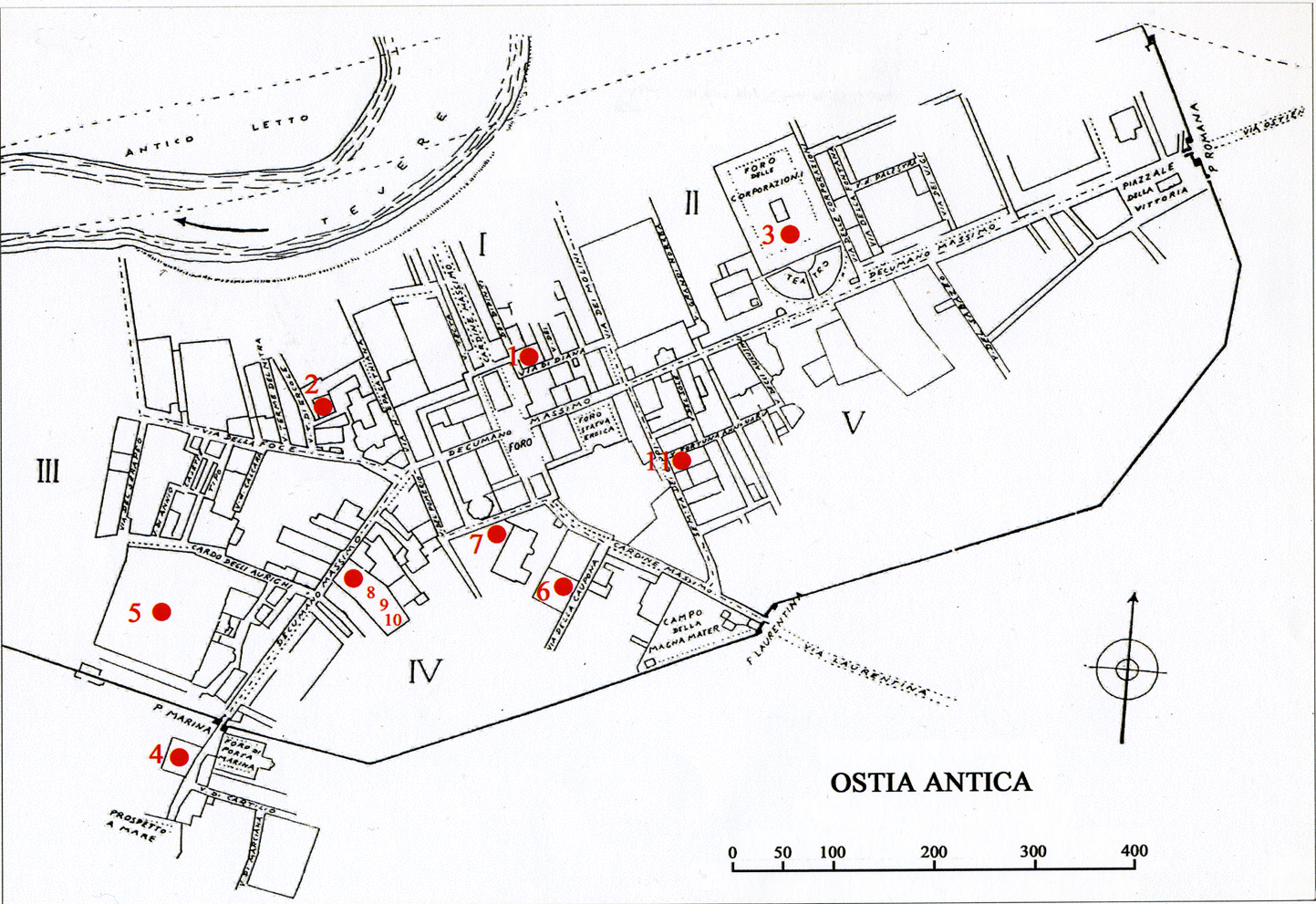
Ostia Antica, General Plan.
Garden
Piazzale della Corporazioni
The Forum of Corporations (Pleiades)
Keywords
- allées
- beds (site elements)
- Augustan
- Domitian, Emperor of Rome
- Hadrianic
- Julio-Claudian
- columns (architectural elements)
- opus signinum
- parterres
- porticoes
- scaenae
- sewers (drainage structures)
- statues
- theater
Garden Description
In the original plan of the Augustan period the garden area to the back of the theater was surrounded on three sides by a roofed corridor opening onto the Tiber on the northern side with a monumental entrance. In the Claudian period the whole level of the area was raised and a portico consisting of a single row of brick columns added. A temple was built at the center of the garden area in the Domitianic period; traditionally identified since its discovery (1881) with the temple of Ceres, it has more recently been attributed to Vulcan or to the imperial cult. During the Hadrianic period the portico was doubled with a second row of columns; the entrances on the northern side were blocked, and buildings erected against them, making access to the garden possible only from the theater (Fig. 1).
The open area to the back of the theater was never built over. Laid out as a garden, and adorned with statues raised in honor of men who had distinguished themselves in trade, it conformed to the recommendation of Vitruvius (5.9.1 | (English) | 5.9.5 | (English)), that areas surrounding a theater be laid out with colonnades (post scaenam porticus) and embellished with gardens, where people could stroll about and converse.
During the excavations of Rodolfo Lanciani (1881) “a street traversing the excavated area of the Forum and aligned on the axis of the temple and the theatre” was identified (Fig. 2). Reported to be “gravelled and edged with marble borders”, this street was probably a path of the garden that led from the theater to the temple at the center of the area: “The Forum of Ceres ... was once ornamented with a garden, the allées of which can still be traced with the help of the marble border-lines by which each plot of green was defined and surrounded.”
During the excavations of Dante Vaglieri (1910-1913), a system of conduits was identified. It was linked to a large sewer that ran underground at the center of the garden area, sloping downwards from south to north in the direction of the Tiber (Fig. 3). Two conduits parallel to the central sewer ran in front of the stationes. At garden level there were two long gutters that collected rainwater from the roof of the portico. Two basins (respectively 3.10x2.90 and 3.45x3.35 m) at ground level were identified on the southern side of the garden; they were paved with opus signinum on the inside and probably panelled in marble.
In October 1912 Dante Vaglieri began the reconstruction of the garden at the center of the Piazzale delle Corporazioni (Fig. 4). He commissioned a famous landscape architect of the period to create a garden with rectangular parterres of various size which retraced in part the layout of the allées and flower-beds of the ancient garden: “This garden, reconstructed by one of our cleverest landscape artists, with its display of classic bushes and flowers, its colonnade lining the four sides of the square, and its array of statues of eminent men, bankers, merchants, magistrates, harbour-masters, &c., has become the chief attraction to the visitors of Ostia…” The leading experts in garden architecture of the period included Pier Andrea and Domenico Saccardi: perhaps one of them was the “cleverest landscape artist.”
Figures
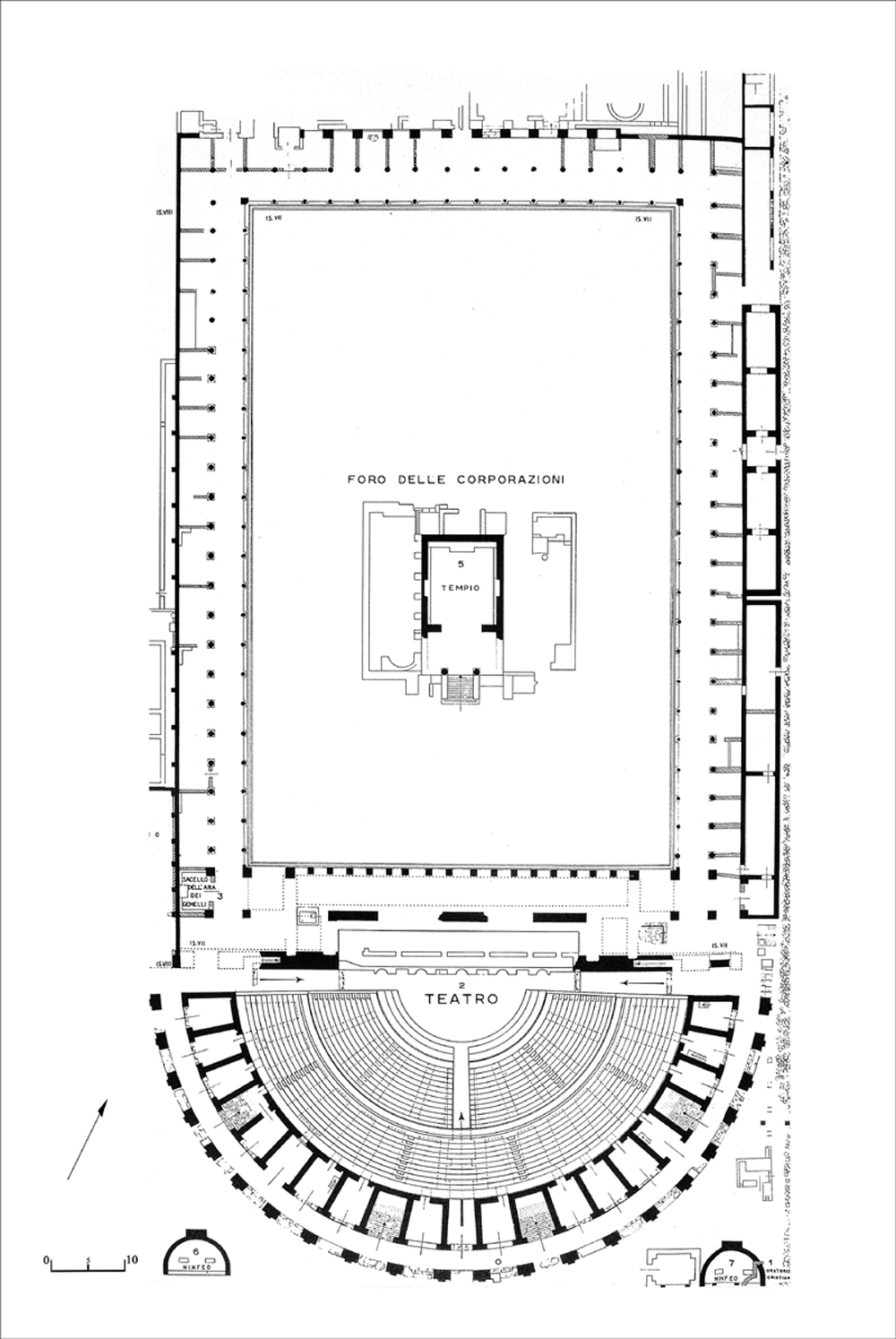
Figure 1: Plan of the Piazzale della Corporazioni (from Calza 1953).
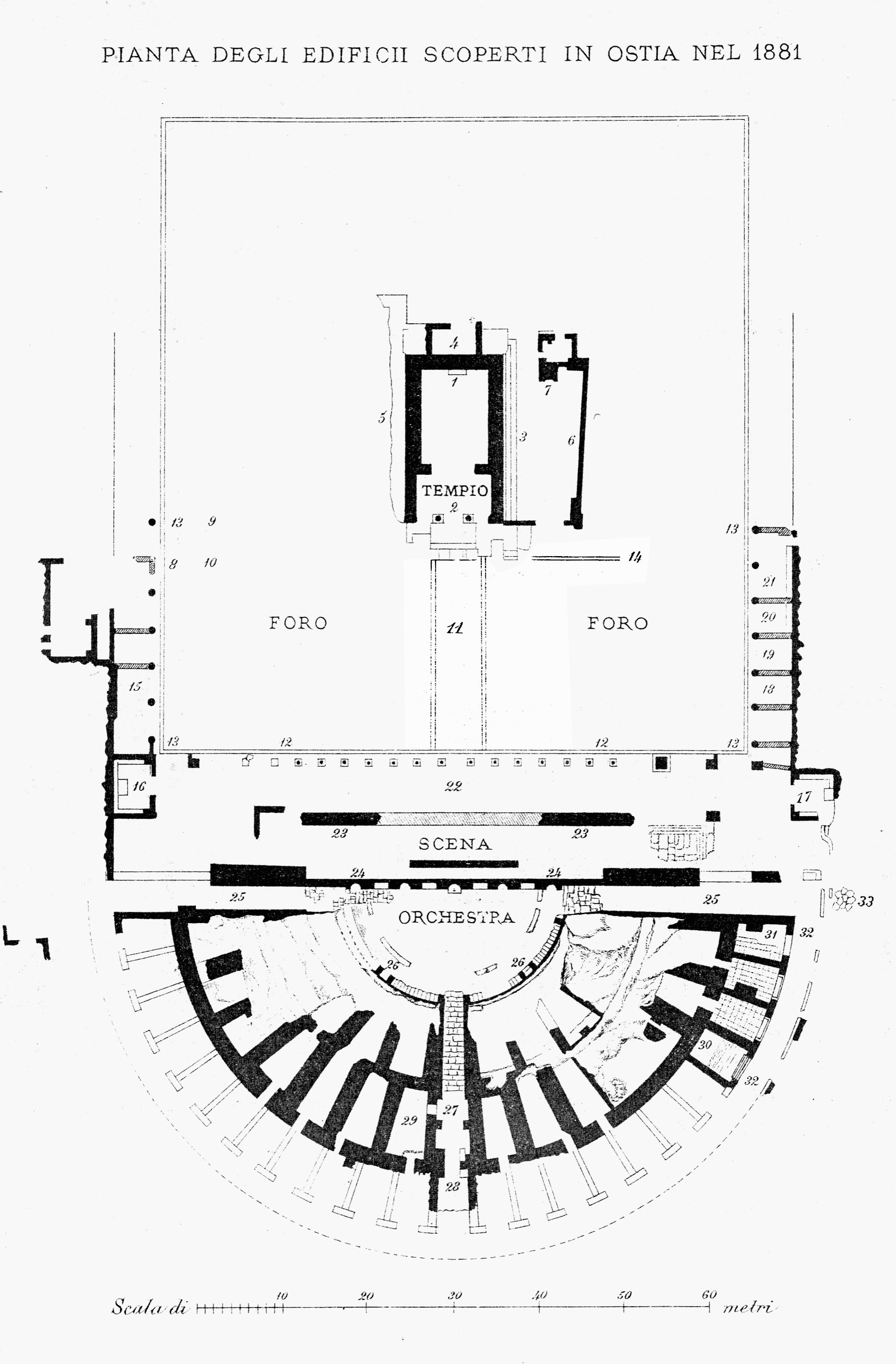
Figure 2: Plan of the Piazzale della Corporazioni (from Lanciani 1881).
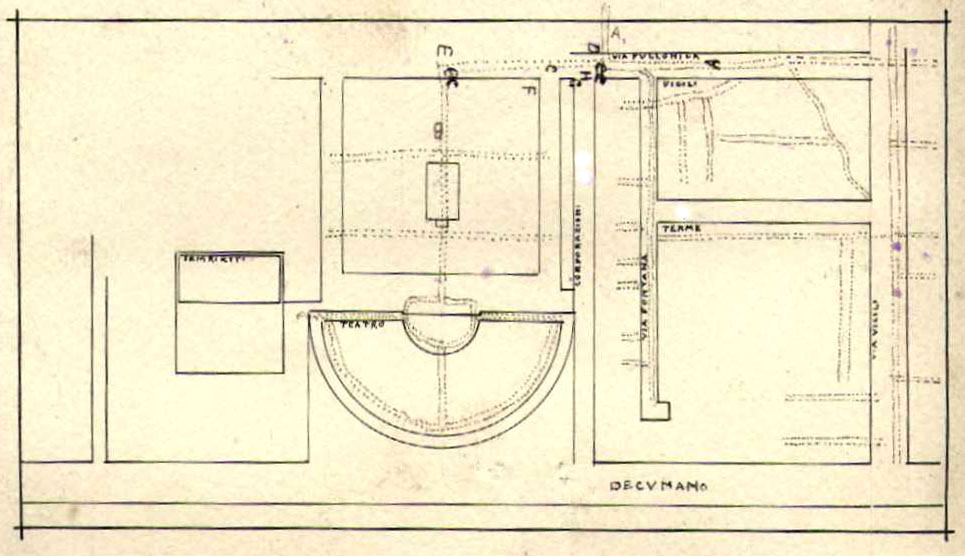
Figure 3: Sketch of the drainage system found below the Piazzale (from Giornale degli Scavi 1912).
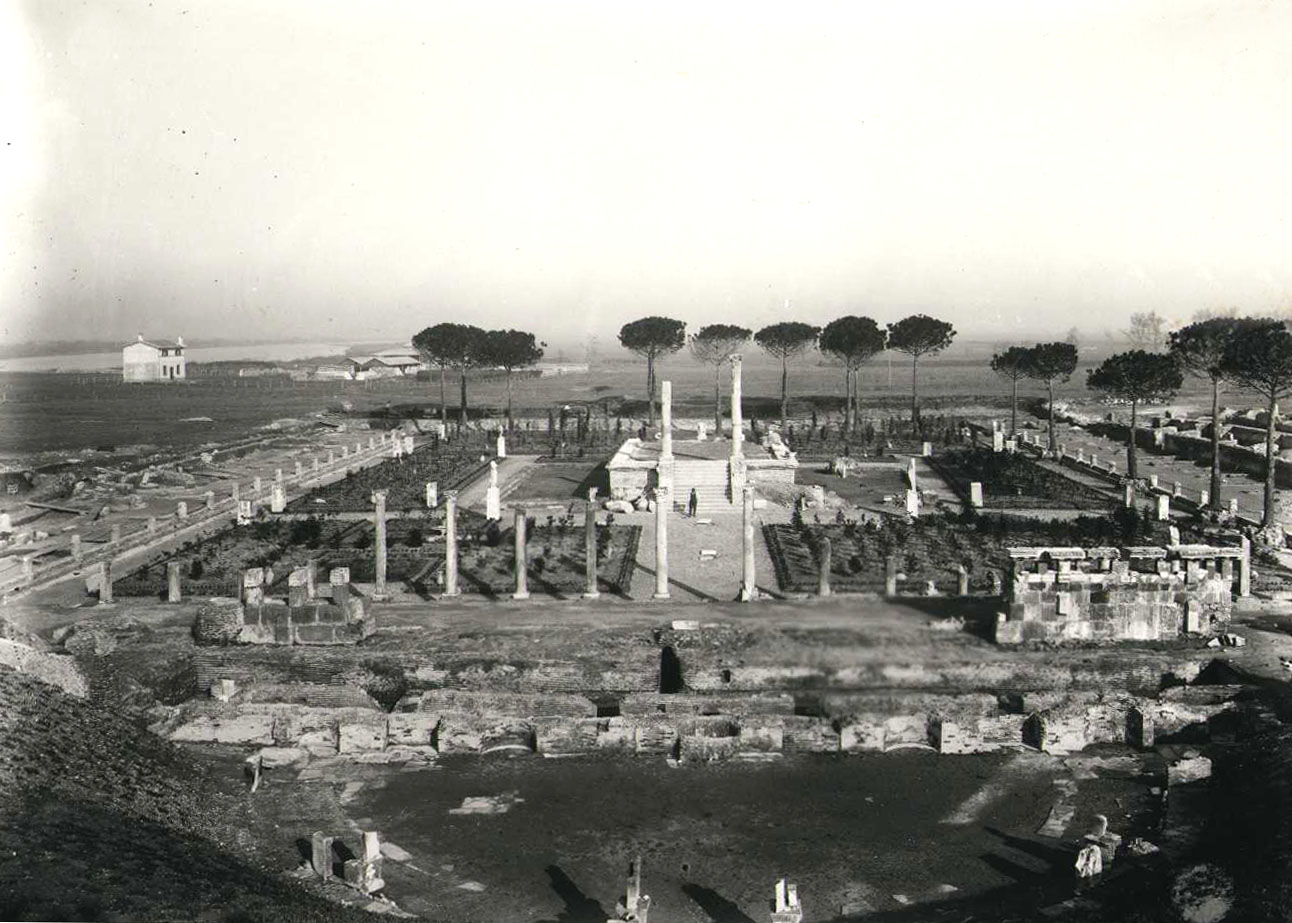
Figure 4: The modern garden, 1912 (PA-OAnt, Photo Archive).
Dates
Augustan period
Claudian period
Domitianic period
Excavation Dates
1881
1910-1913
Bibliography
- G. Calza, G. Becatti, I. Gismondi, G. De Angelis D’Ossat, H. Bloch, Topografia generale, Scavi di Ostia I, Rome, 1953.
- R. Meiggs, Roman Ostia. (worldcat)
- C. Pavolini, Ostia: Vita quotidiana. (worldcat)
- Jean-Paul Descœudres, Ostia: Port et porte de la Rome antique. (worldcat)
- E.J. Shepherd, P. Olivanti (eds), Giardini ostiensi, Bullettino della Commissione archeologica comunale di Roma, 109, 2008, pp. 69-98. (worldcat)
- M. De Vico Fallani, C. Pavolini, E. J. Shepherd, M. Pileri, "Le sistemazioni a verde di Michele Busiri Vici per Ostia Antica: un caso di studio," Rivista di Archeologia 43, 2019, pp. 165-176. (worldcat) (Rivista di Archeologia)
- M. De Vico Fallani, C. Pavolini, E. J. Shepherd, M. Pileri, "Un sogno lasciato a metà: il progetto di Michele Busiri Vici per le sistemazioni arboree e per i giardini nella zona di Ostia Antica Scavi (1939-1941)," Bollettino d’Arte, in press. (worldcat)
- Giornale degli Scavi, 1912, pp. 279, 303, 338.
- Giornale degli Scavi, 1913, pp. 10, 21, 331, 350.
- R. Lanciani, "Ostia," in Notizie degli scavi di antichità, 1881, p. 119. (worldcat)
- R. Lanciani, Notes from Rome, (A.L. Cubberley ed.), London, 1988, pp. 434-435. (worldcat)
- M. De Vico Fallani, "I giardini ostiensi di Dante Vaglieri. Brevi osservazioni a margine," Bollettino di Archeologia on line V, 2014/2, pp. 55-64. (worldcat) (Bollettino di Archeologia online)
- E.J. Shepherd, "Prima di Busiri Vici: storia di tre giardini ostiensi e di un parco mai realizzato," in M. De Vico Fallani, C. Pavolini, E. J. Shepherd, M. Pileri, "Un sogno lasciato a metà: il progetto di Michele Busiri Vici per le sistemazioni arboree e per i giardini nella zona di Ostia Antica Scavi (1939-1941)," Bollettino d’Arte, in press. (worldcat)
Pleiades ID
TGN ID
Contributor
Publication date
21 Apr 2021